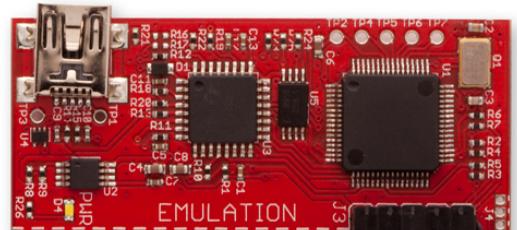SLAU647O July 2015 – April 2020
-
MSP Debuggers
- Trademarks
- 1 Introduction
- 2 MSP Debug Probe Overview
- 3
Hardware Identification
- 3.1 How to Determine If Your Hardware is Based on eZ-FET or eZ-FET Lite
- 3.2 How to Determine If Your Hardware is Based on eZ430
- 3.3 Signal Connections for In-System Programming and Debugging
- 3.4 Using the Power Supply Feature of the eZ-FET and eZ-FET Lite
- 3.5 Using the Power Supply Feature of the MSP-FET430UIF and MSP-FET
- 4 Hardware Installation
- 5
Debug Probes Hardware and Software
- 5.1 MSPDebugStack
- 5.2 Ultra-Low-Power (ULP) Debug Support
- 5.3 EnergyTrace™ Technology
- 5.4 Unlimited Software Breakpoints in Flash, FRAM, and RAM
- 5.5 JTAG Access Protection (Fuse Blow)
- 5.6 MSP-FET Stand-Alone Debug Probe
- 5.7 MSP-FET430UIF Stand-Alone Debugger
- 5.8 eZ-FET and eZ-FET Lite Onboard Emulation
- 5.9 eZ430 Onboard Emulation
- 5.10 MSP-FET430PIF
- Revision History
5.9 eZ430 Onboard Emulation
The eZ430 onboard emulation is the legacy onboard flash emulation for application development on MSP430 microcontrollers. The eZ-FET and eZ-FET Lite onboard emulation are the successors of the legacy eZ430.
The eZ430 provides a USB interface to program and debug the MSP430 MCUs in-system through the pin-saving Spy-Bi-Wire (2-wire JTAG) protocol. Furthermore, the USB interface can be used for Backchannel UART communication.
NOTE
The eZ430 does not support all MSP430 MCU families. See Table 1 for more details about device support.
The eZ430 onboard emulation and its backchannel UART might fail to enumerate on USB 3.0 computer ports. If enumeration fails, reconfigure the USB 3.0 port to USB 2.0 mode in your computer BIOS.
If the eZ430 onboard emulation is used with active software breakpoints, the RUN to MAIN function might fail. Disable software breakpoints to enable RUN to MAIN.
 Figure 54. eZ430 Emulation
Figure 54. eZ430 Emulation